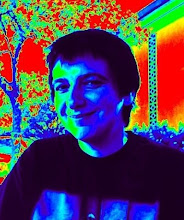The far rainbow

One of the most intriguing novels produced by the Strugatsky brothers was, in my opinion, "Far rainbow". First published in 1967, it relates the story of an experiment gone awry. On a planet inhabited by a colony of scientists doing theoretical and experimental research in "zero-physics". By effect of some of these experiments a large destructive wave arises from both poles and advances towards the equatorial regions of the planet where the colonist reside. While in the previous experiments the giant wave had been successfully contained so that its destructive effects died out before it could reach the inhabited areas of the planet, the events depicted in the story relate the chronicle of a later experiment that sets in motion a much larger and destructive wave that cannot be stopped and keeps advancing from the poles towards the equator destroying everything in its wake. The narration zooms in on some of the people involved in the experiments: the experienced Leonid Gorbovsky, already a character in a series of previous Strugatsky stories, the young sympathetic anti-hero Robert Sklyarov, and the mysterious not quite entirely human genius Camill. The story is primarily about the psychological reactions of the various characters faced with a tragic and inescapable fate. Yet the tone of narration is not that of tragedy: there is an undertone of optimism and lightness, even in the face of the impending disaster and the surrounding scenario of destruction.

Interestingly, in the past few weeks I have experienced a recurrent dream, which greets me every few nights with increasingly long and realistic scenarios and takes me right into the heart of the "Far rainbow" story. Night after night, I become part of the community of scientists experimenting with the containment of a giant wave, which in the subsequent re-runs of the dream becomes less and less containable, until, out of control as in the Strugatsky story, it just keeps advancing, engulfing the observation tower and the research facilities. What seems most striking in these dreams is the phase in which the giant wave appears immobile, a high wall of water that remains perfectly still as if frozen into an instantaneous snapshot, confined to that unlikely stillness behind an unspecified containment force. It looks like an improbable colossal architecture, an image of force frozen into a menacing high wall, a strange sense of time itself being denied existence. In some version of the dream I walk on an observation platform just above this frozen giant wave to look closely at its improbable existence. In later dreams this phase of immobility becomes more and more tenuous, improbable. The wave, in all its might, begins to move, to catapult its immensity of fluid momentum against whatever lies in its path. As to make it completely clear that the dreams are indeed connected to the Strugatsky novel, in one of the versions my subconscious carefully inserted several direct references to 1960s Russia in my oneiric exchanges and interactions with other scientists involved in the wave experiment.

Perhaps one of the aspects of the novel that I like the most is the contrast that is artfully created between the Robert/Camill pair of characters. Robert is a somewhat cynical certainly less than heroic fellow who finds himself in the middle of a series of events he is ill equipped to handle. He is full of ambiguities, difficult, at times childish, at times full of insight. Camill is also a difficult character for an entirely different reason. He is different, in a way that is perceptible and yet not immediately identifiable. This difference generates incomprehension from all the people around him, including Robert who just leaves him for dead during a recognition mission to monitor the behavior of the wave. Only towards the end of the novel, when the partial evacuation of the planet has happened and those who were forced to remain behind quietly wait for the final destruction, Camill reappears to reveal his true nature of human/machine blend. There are many other carefully designed subplots in the novel and it certainly makes for one of the best Strugatsky readings. Why it seems to reverberate so much with my inner psyche at this particular time I yet do not know.


<< Home